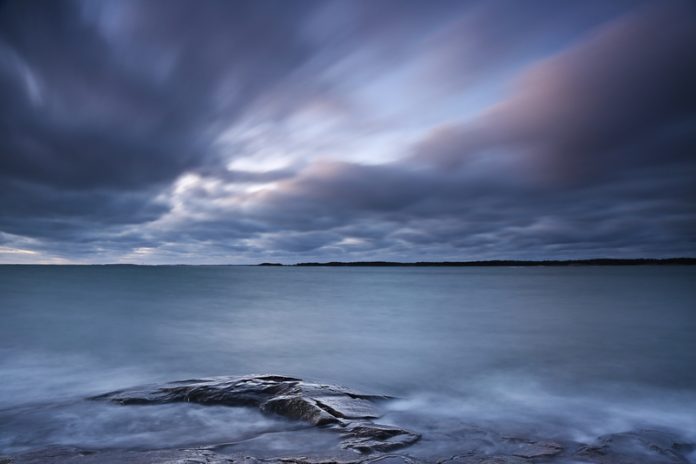Often seen as one of the most overstretched resources, the seas offer one of the best avenues for sustainable growth if utilised correctly
Humankind is faced with great challenges. Studies show that the rapidly growing population needs 50% more food, 45% more energy and 30% more freshwater by 2030. Diminishing land space and overexploitation of natural resources obviously lead to higher costs and increasing social conflicts.
The oceans cover more than 70% of the Earth’s surface but only 4% of the nutrition comes from the marine areas. However, the production potential of fish and aquatic plants is several times that of conventional land cultivation and meat production. For the past 2 decades fish farming has been the most rapidly growing form of primary production and it has already passed the volume of beef production.
Marine areas have the potential to sustainably produce 4 times more electricity than what humankind is using now. Currently marine renewable electricity production represents only around 0.2% of the total production. Meeting the growing need for energy is expected to lean strongly on renewable offshore solutions. We can already witness significant offshore wind power growth in Europe.
Oceans and seas will be viable responses to the global water crises. So far the main challenge in utilising these resources has been the energy cost and carbon footprint of desalination. Combining marine renewable energy production and desalination would reduce CO2 emissions and enable the production and storage of drinking water when there is oversupply in energy.
Most of the world’s megacities are located on seashore. Floating buildings may be a solution to the housing shortage and other community planning challenges in these cities. Floating buildings are able to adapt to rising water levels, which may be important in cities that are preparing for the effects of climate change. Industrialisation of the oceans is already taking place.
However, pace of the development in coming years may surprise. The change involves great opportunities but also ecological risks. There are still huge gaps in the understanding of the impacts of human activities on the marine ecosystems and their resilience and capacity to recover. There are also e.g. deficiencies in understanding long-term impacts of waves, sea currents or ice loadings on the offshore structures. Enhancing marine knowledge requires investments in research and impact monitoring, as well as constant dialogue on the sustainability.
Blue growth powered by digitalisation
Blue growth is obviously driven by the needs on the market. However, it is strongly boosted by enabling technologies like digitalisation, artificial intelligence and robotics, as well as the advancement of telecommunications technology.
At present, the amazingly rapid development of artificial intelligence and robotics challenges almost all branches of industry. For the blue growth they mean substantial opportunities because work at sea and especially under the surface is often dangerous and costly.
In a few years nanosatellites and 5G networks will make it possible for vessels and robots – as well as people at sea – to be constantly connected to the internet. This will enable remote operations without delay and new kinds of automated and autonomous solutions, e.g. marine logistics in the future will likely be based on autonomous vessels that seamlessly connect the marine and terrestrial logistics networks.
Drivers for change are also cheaper and more miniaturised sensors that enable us to collect enormous amounts of information from the marine areas in a very short time. At the same time, artificial intelligence will enable rapid analysis of the big data produced by the sensor networks.
Blue innovations fed by collaboration and a joint vision
Grasping the opportunities in blue growth requires a new mind-set where the sustainable growth of the marine sector is viewed as a single entity. A comprehensive perspective helps researchers perceive shared development needs. It would also motivate companies to invest in the development of blue growth solutions. A joint vision would help to understand how the different sectors could benefit from the collaboration.
The current regulatory framework has not been designed with the needs of the modern blue economy. Legislation has to safeguard the sustainability but also enable and encourage the introduction of new, even disruptive innovations. Modern ocean governance, maritime spatial planning and macro-regional strategies are key tools to reconcile environmental and industrial objectives, as well as boosting sustainable blue growth at the international level.
Opportunities for sustainable growth lie in the sea. Enhancing the multidisciplinary collaboration between sectors and strengthening the public-private partnership are key elements in creating favorable preconditions for innovations and growth. In this respect, the government of Finland is starting a new strategy process to build national coherent and integrated maritime policy. Furthermore, the Finnish Funding Agency for Innovation has invested via the Arctic Seas Programme in establishment of autonomous shipping ecosystem.
We believe that the Baltic Sea region has excellent potential to become a world-class test area for blue growth innovations and modern ocean governance.
Piia Moilanen
Arctic Seas Programme Manager
Tekes
piia.moilanen@tekes.fi
Mr. Timo Halonen
Senior Specialist
Ministry of Agriculture and Forestry











